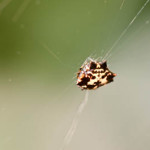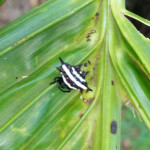Phyllium Siccifolium
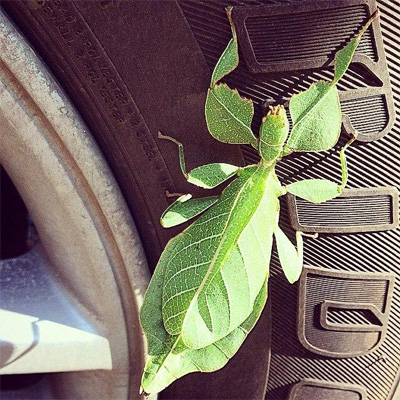
Image Copyright Loukpud Shinkhem
Last Observed: December 2015, Koh Chang
Observed By: Loukpud Shinkhem, Heli Pohjolainen, Dave Hinchliffe
Phyllium siccifolium is a leaf insect from the family Phillidae. these insect mimic leaves to a truly remarkable extent. They are found from South and Southeast Asia through to Australia.
Phyllium Siccifolium ourbreathingplanet.com
Image Copyright Heli Pohjolainen
Image Copyright Dave Hinchliffe
Phalera reya
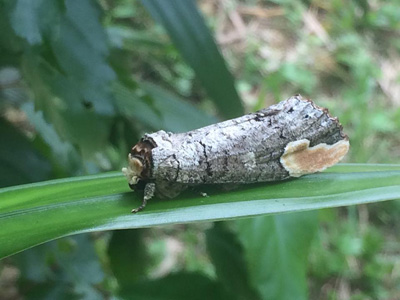
Image Copyright 2015 Hans-Henrik Hansen
Last Observed: 2015, Koh Chang
Observed By: Hans-Henrik Hansen
Phalera reya is a brilliant imitator. When perched with its wings folded it looks exactly like a small twig. The level of detail is impressive, there is even a patch of ‘lichen’ featured on each wing.
Phalera (Genus) Wikipedia
Peridrome orbicularis
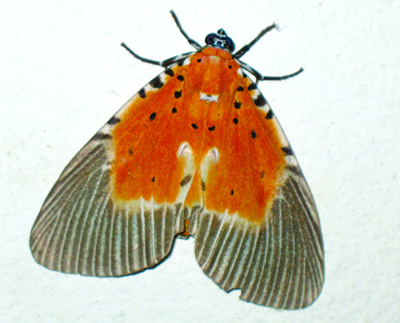 Last Observed: 2010, Koh Chang
Last Observed: 2010, Koh Chang
Observed By: Dave Hinchliffe
Poor old Peridrome orbicularis. It doesn’t seem to have a common name – just the Latin one. You would think that some moth-spotter somewhere would have considered it beautiful enough to merit its own common name – even if it was something as prosaic as “Black-spotted orange moth”.
Maybe it has a name somewhere and we just haven’t found it yet.
Until then, at least on Koh Chang Nature, it shall be known as the Tequila Sunset Moth.
Peridrome orbicularis Wikipedia
Garden or Writing Spider (Argiope sp., Araneidae)
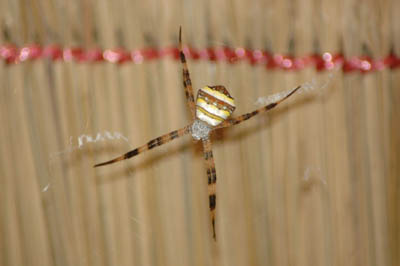
Image Copyright David Newman
Observed: October 2015, Lonely Beach, Koh Chang
Observed By: David Newman
This spider is of the genus Argiope which are commonly known as garden spiders. It looks like the yellow garden spider but since they are common to North and Central America one it probably isn’t unless it hitched a lift in a backpack. It’s a close cousin anyway, feel free to let us know if you find the exact species.
As with most spiders the female garden spider is far larger than the male. They lay 400 to 1,400 eggs. They will kill insect prey up to twice their size and, reassuringly, they are harmless to humans.
Garden Spiders on Wikipedia
Indian Cushion Seastar (Culcita schmideliana)
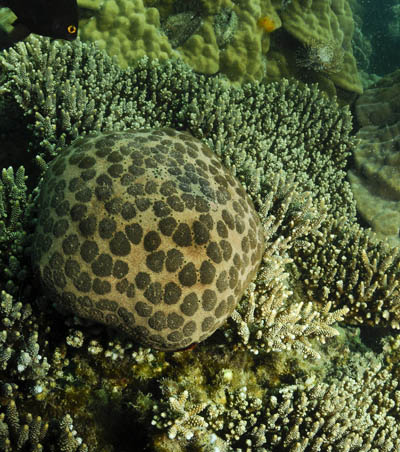
Image Copyright 2010 jonathan Milnes
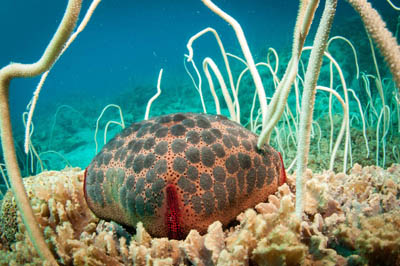 Observed: Koh Chang Reefs, February 2010
Observed: Koh Chang Reefs, February 2010
Observed By: Jonathan Milnes
The Indian Cushion Sea Star is a large and, you guessed it, cushion-like species of starfish found on Koh Chang. It has a a very different shape to the more typical five-armed examples of the starfish family but if you look closely you can still see the pentagonal shape of the animal.
Starfish are not, as many people think, members of the Mollusc family, they are in fact classified along with sea wasps, sea urchins and brittle stars as Echinoderms. I’d be lying if I said that I knew that when I started writing this.
Indian Cushion Seastar
Giant Clam (Tridacna Gigas)
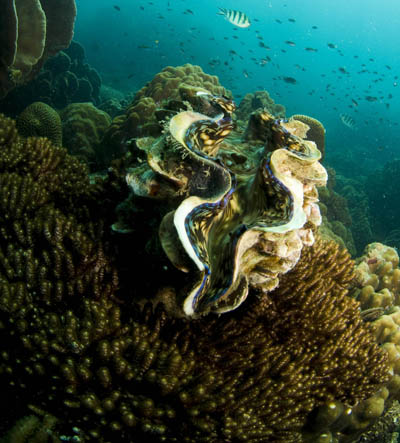
Image Copyright Jonathan Milnes
Observed: Koh Chang Reefs, 2012
Observed By: Jonathan Milnes
The giant Clam is an enormous sea-dwelling mollusc that despite being a common sight on the coral reefs of Koh Chang is actually one of the most endangered species of clam. It is also, yet again for Koh Chang, the world’s largest bivalve mollusc and individuals have beem recorded with weights of up to 200km and measuring 1.2 metres across. that’s a lot of chowder!
Giant Clam Wikipedia
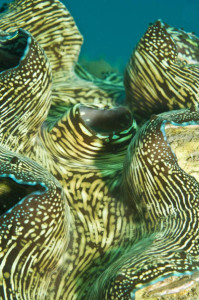
Image Copyright Jonathan Milnes
Orange Sea Whip (Ellisella circidia)
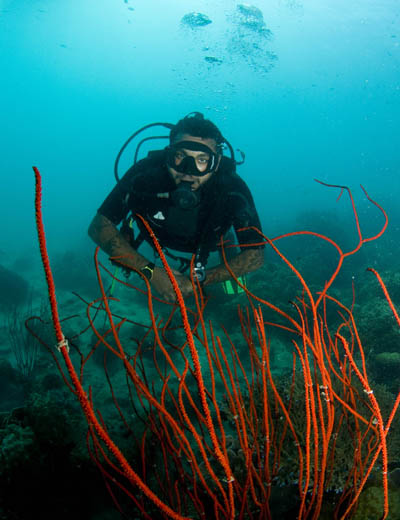
Image Copyright 2010 Jonathan Milnes
Observed: Koh Chang Reefs, 21-02-2010
Observed By: Jonathan Milnes
The Orange Sea Whip is a brilliantly coloured species of Gorgonian coral, a family comprising many species of sea fan and sea whip corals that are characterised by long branching arms. It is fairly common sight on the reefs surrounding Koh Chang.
Spiny Orb Weaver (Gasteracanthra cancriformis)
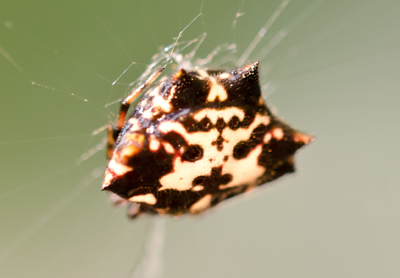
Image Copyright 2015 David Vinot
Last Observed: February 2015, Koh Chang
Observed By: David Vinot
This small spiky shelled little spider is a member of the orb weaver family of spiders. It is found in many tropical locations worldwide and has an impressive number of aliases, being know by the following: the star spider, spiny-backed orbweaver, spiny orbweaver spider, crab-like orbweaver spider, crab-like spiny orbweaver spider, jewel spider, spiny-bellied orbweaver, jewel box spider, smiley face spider or sometimes in the Philippines, the king.
Spiny Orb-Weaver Wikipedia
Image Copyright 2015 David Vinot
NB: Clearly the two spiders pictured are different species of spiny orb-weaver. If someone can identify the black and white one we’ll add another page.
Day-Flying Moth Caterpiller (Cyclosia papilionaris)
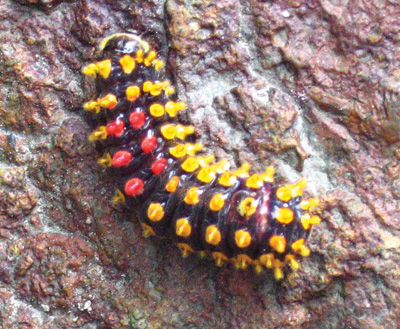
Image Copyright 2005 David Hinchliffe
Last Observed: November 2005, White Sand Beach – Koh Chang
Observed By: Dave Hinchliffe
This astonishing looking caterpillar is in fact the juvenile form of the Day-Flying Moth. It also goes by the more appropriate name of Drury’s Jewel. It is covered in yellow coloured protrusions with just six that are red in colour.
Surprisingly the moth that it eventually transforms into is a simple black and white colour. Where all that colour goes is anybody’s guess.
More information
Thai Rainbow Millipede (Tonkinbolus dollfusi)
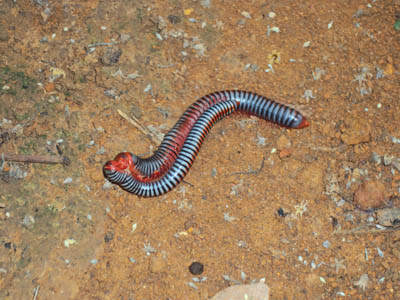
Image Copyright 2015 David Vinot
Last Observed: February 2015, Koh Chang
Observed By: David Vinot
The Thai Rainbow Millipede is a beautifully coloured member of the millipede family that is commonly found on Koh Chang. Like all millipedes it is slow moving and has four legs to each segment in contrast to the faster centipede family who have only two legs to each of their segments.


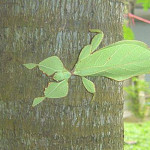
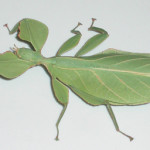




 Observed: Koh Chang Reefs, February 2010
Observed: Koh Chang Reefs, February 2010



